This article was previously published in CoART Magazine and appears here with permission. Text © 2019 CoART Magazine, a division of CoART Media, LLC.
SEATTLE––Without defying Tennyson‘s proclamation that it’s “better to have loved and lost than never to have loved at all”, Bob Dylan‘s raspy voice recounts a further truth: that lost love can become haunting, unwelcome memories shattering an otherwise serene existence. Thus begins the latter half of the musician’s Oh Mercy album with the song “Most of the Time”, a title which is shared by artist Alessandro Gallo‘s newest solo exhibition (April 23 – May 31, 2019). And this turn of phrase’s appropriation seems quite apt, as Gallo’s most recent sculptural array of bestial-headed humanoids all seem concerned with togetherness. Or, more precisely, the lack of it.
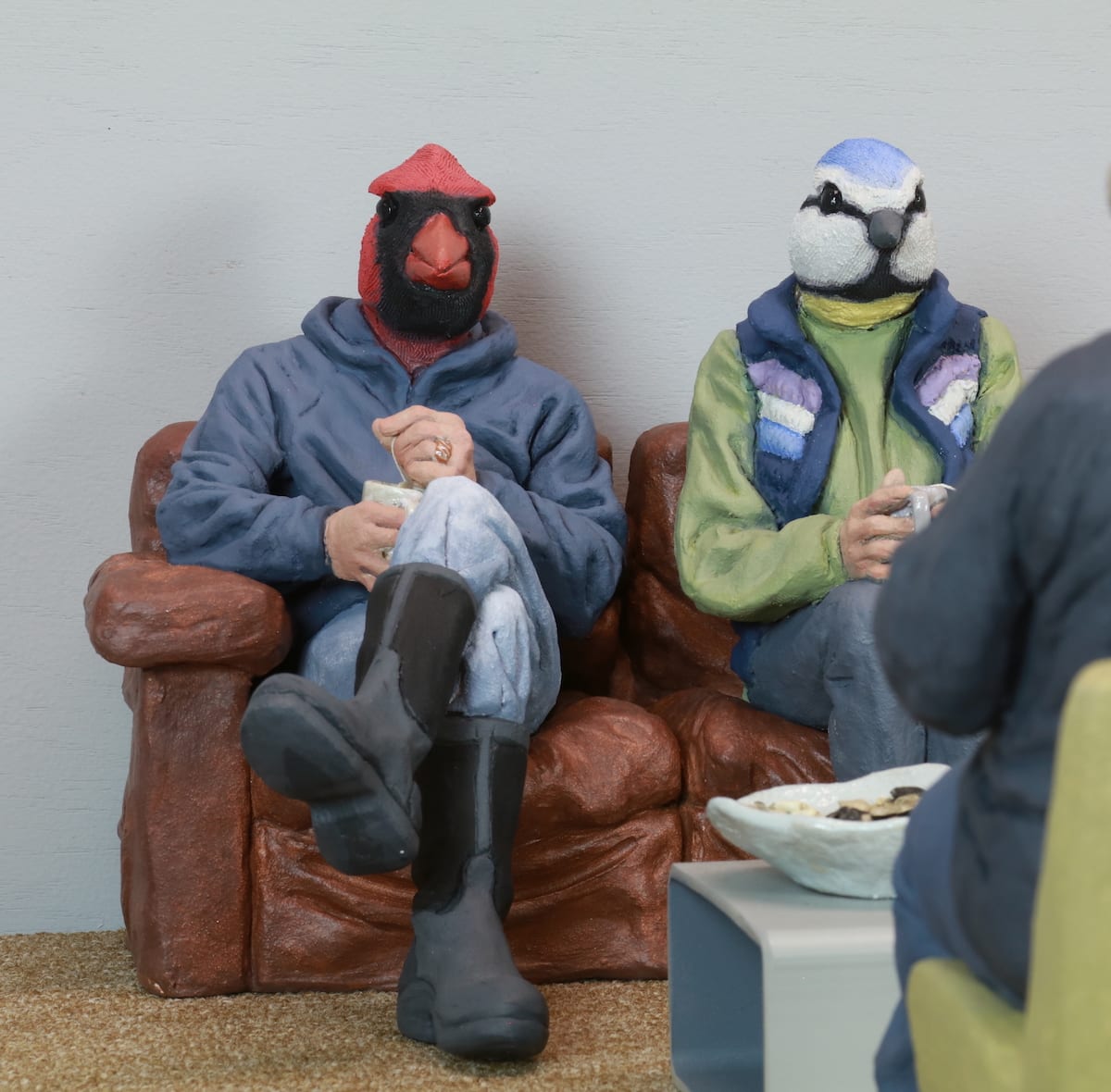
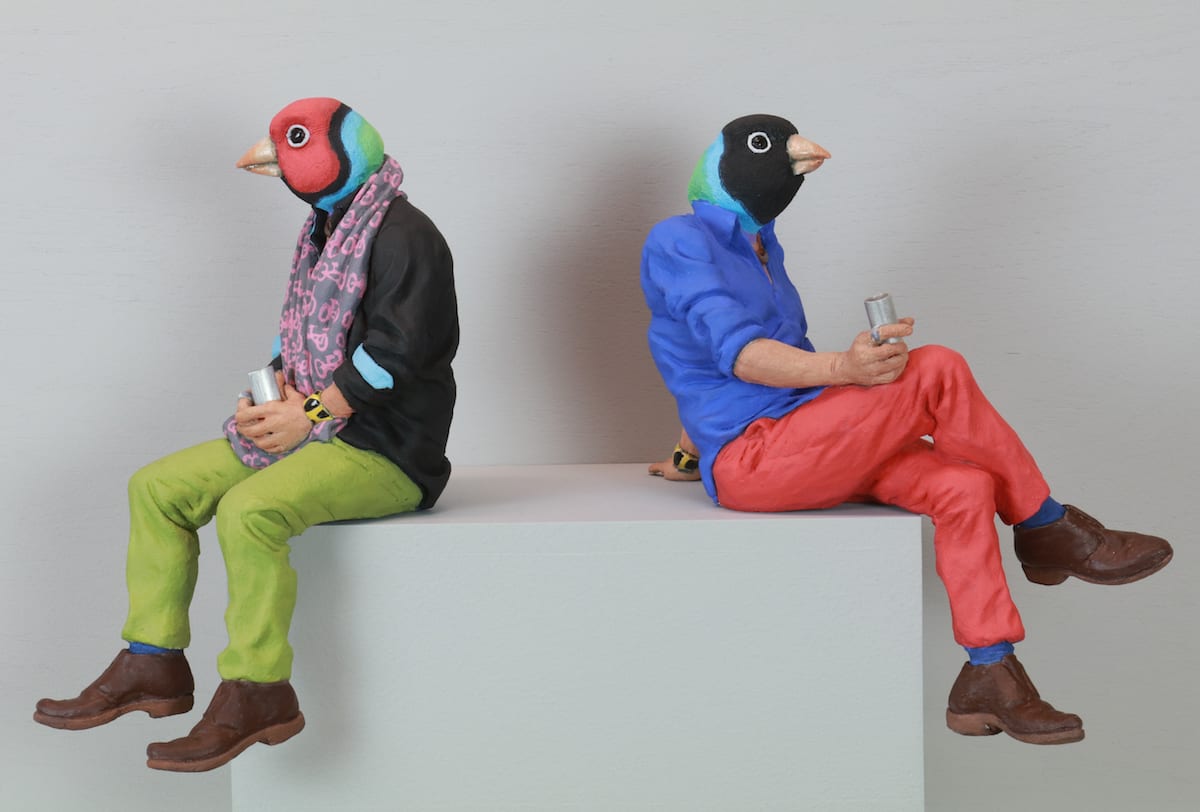
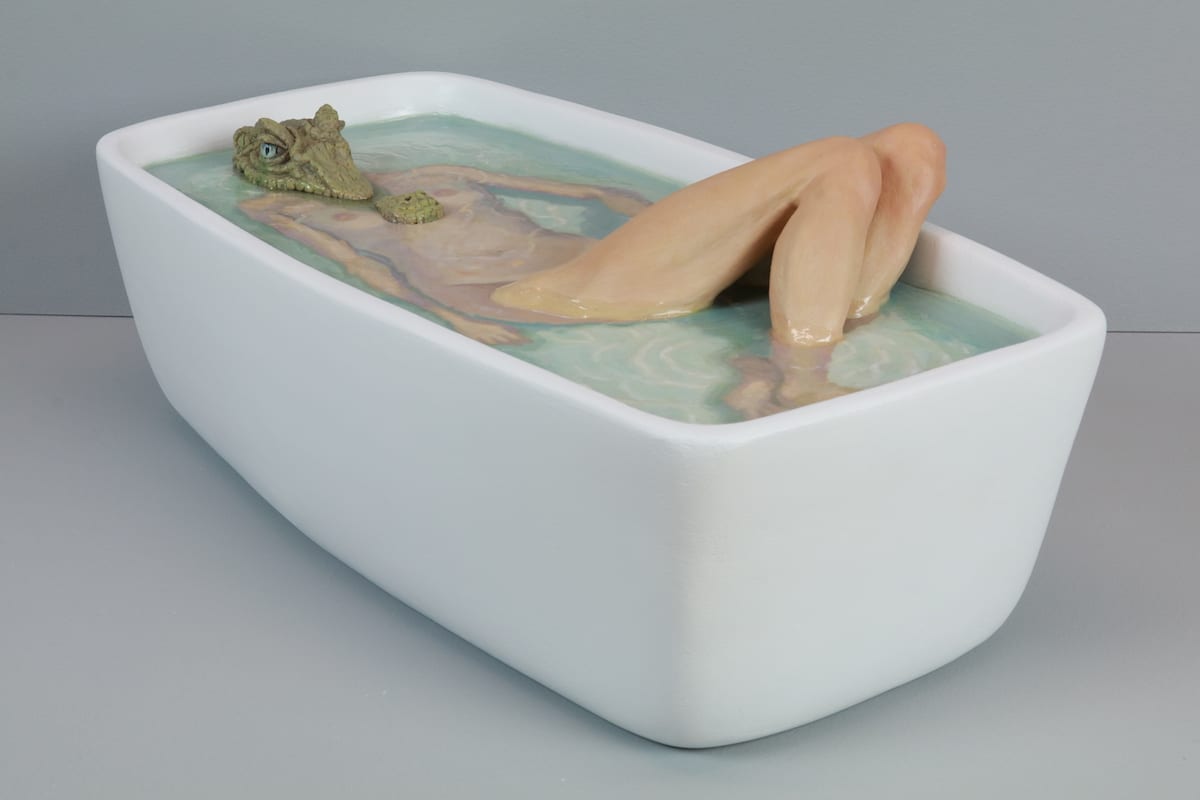
Gallo’s fantastical hybrids are collectively called Strani Incontri, or “Strange Encounters” in his native Italian. Of note is that the strangeness isn’t applied to a singular “Being” but rather an “Encounter”, a meeting of two or more individuals. While this could simply denote the spliced-together nature of his subjects, it also calls attention to how each stoneware sculpture interacts with its surroundings. For instance, Gently Down the Stream is a dioramic depiction of a seemingly relaxed setting, a pair of bird-headed people sitting across from a note-taking frog-woman. But closer examination reveals the avian couple’s wedding bands, a proffered box of tissues residing on the table before them. Apparently a scene of counseling in progress, their close proximity to each other masks a potentially great emotional distance that is currently trying to be bridged.
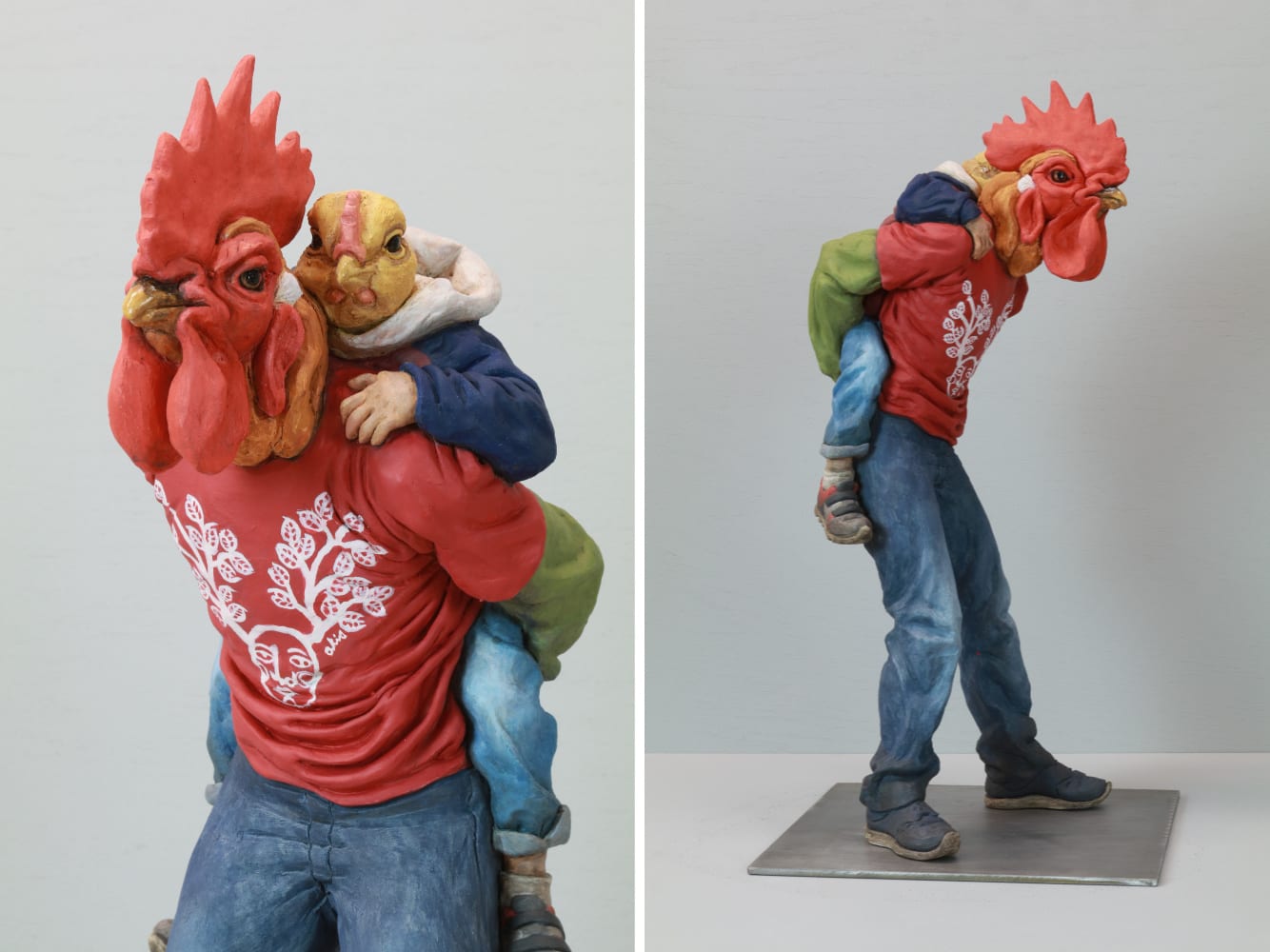

Even when Gallo’s works are solitary, their minutiae divulge a greater story. Affixed to a camouflaged hunter’s body, the sharp-eyed northern goshawk depicted in Breathe has its compound bow tautly drawn, an unseen victim evident to the mind’s eye of the viewer. And as is the nature of the predator-prey relationship, this scenario will end badly for one of them, either with feast or famine. Crocodile Tears, conversely, transforms the bathing beauty trope into a femme fatale, her alluring nakedness attracting potential mates before her poised-to-strike maw clasps onto them.
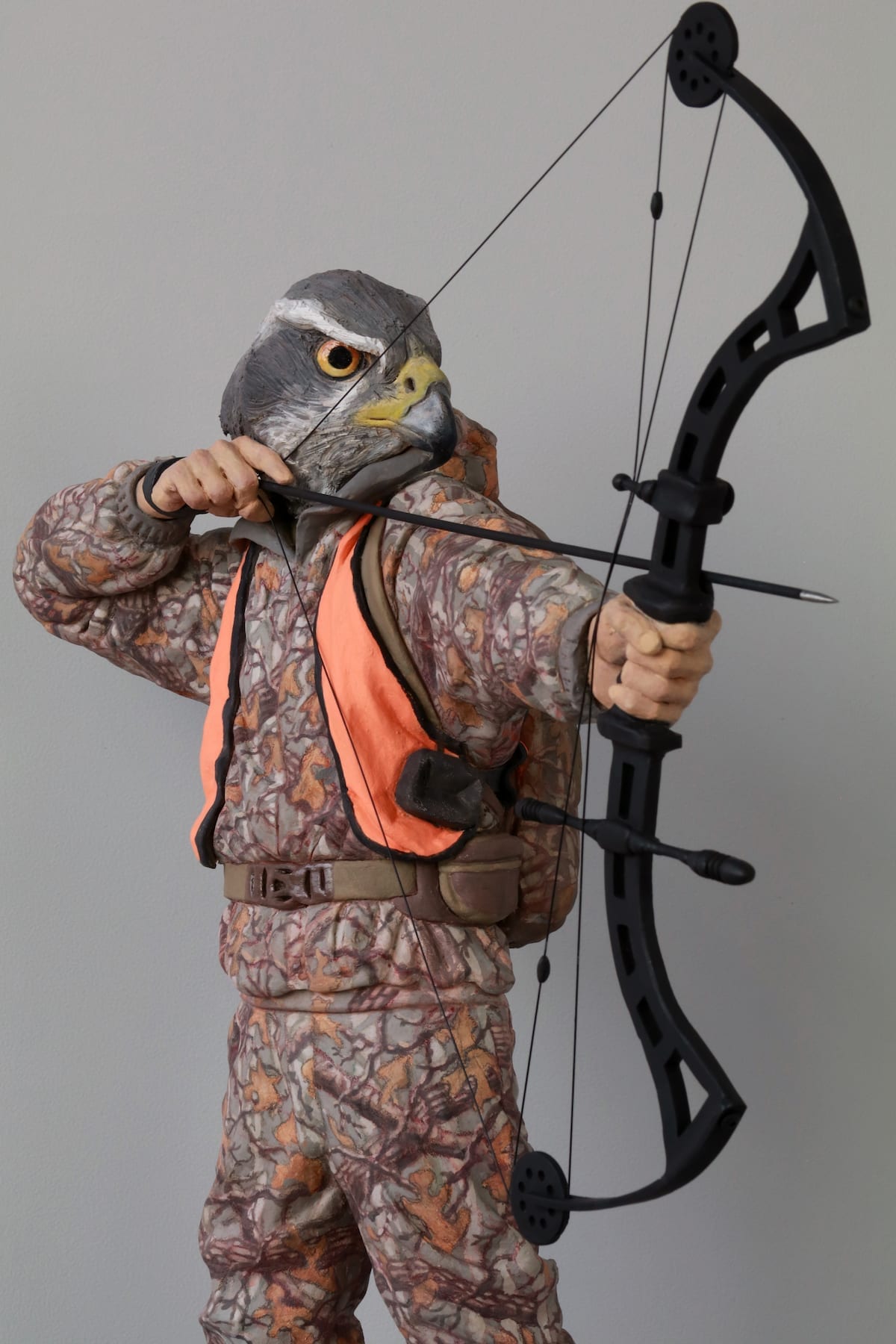
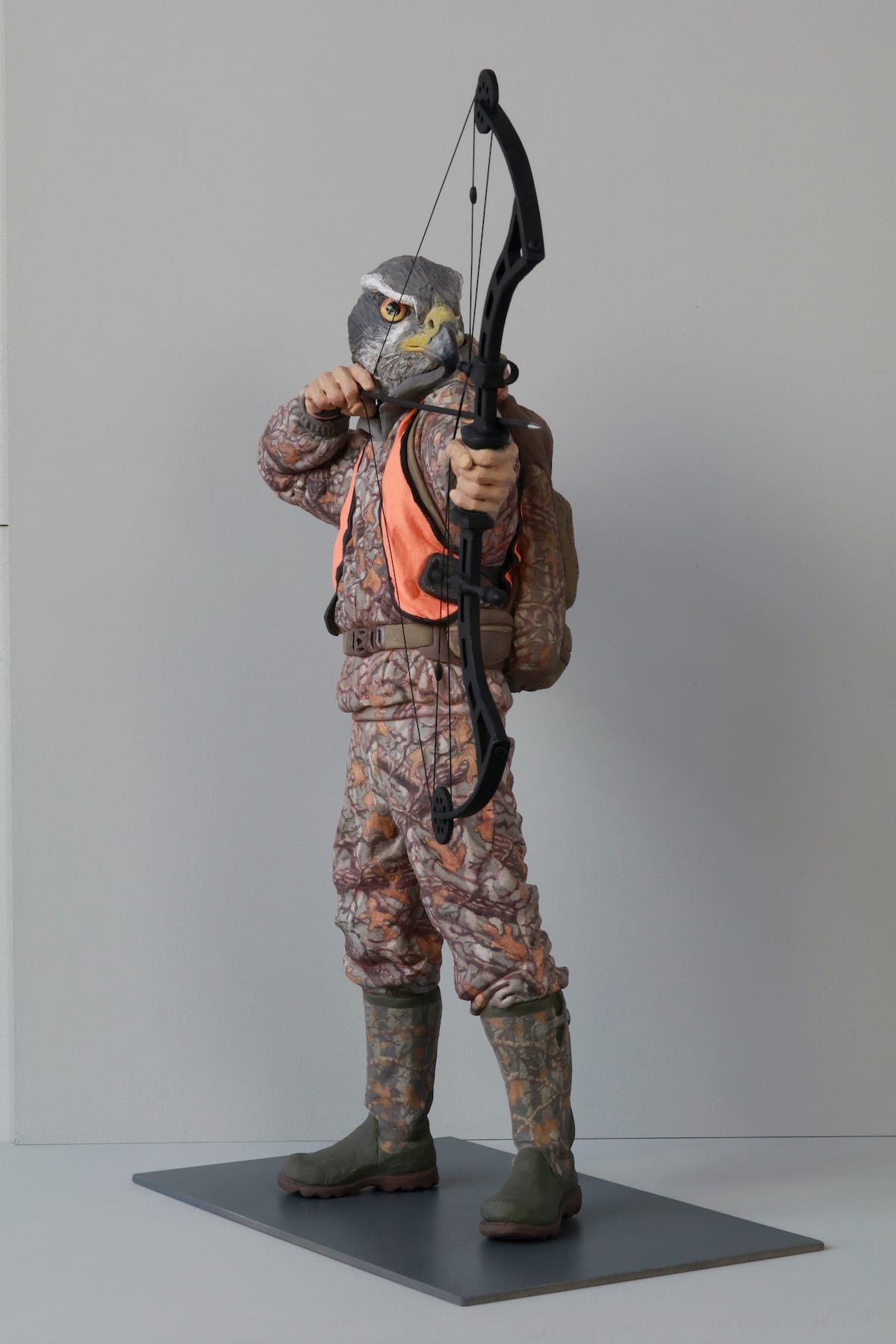
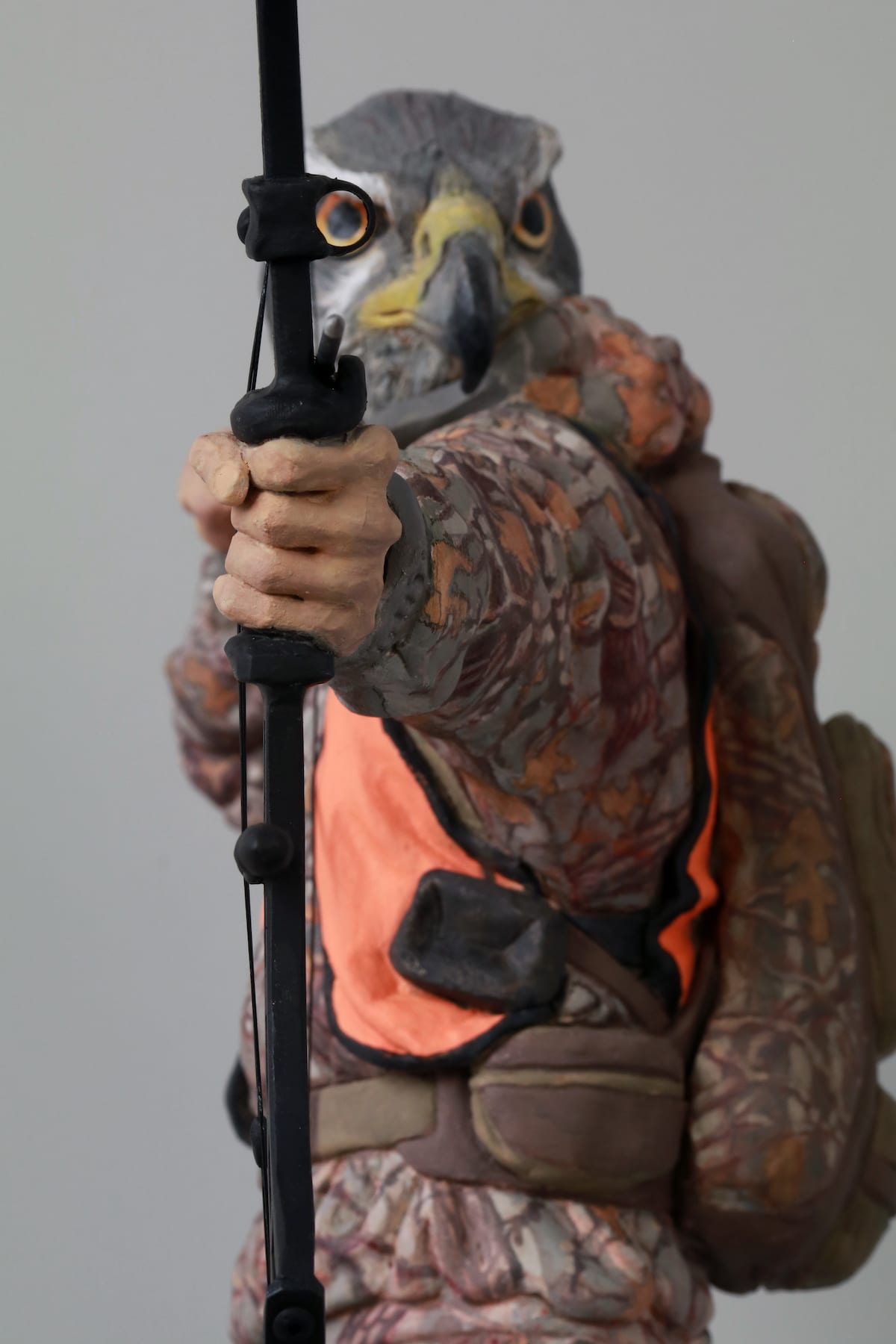
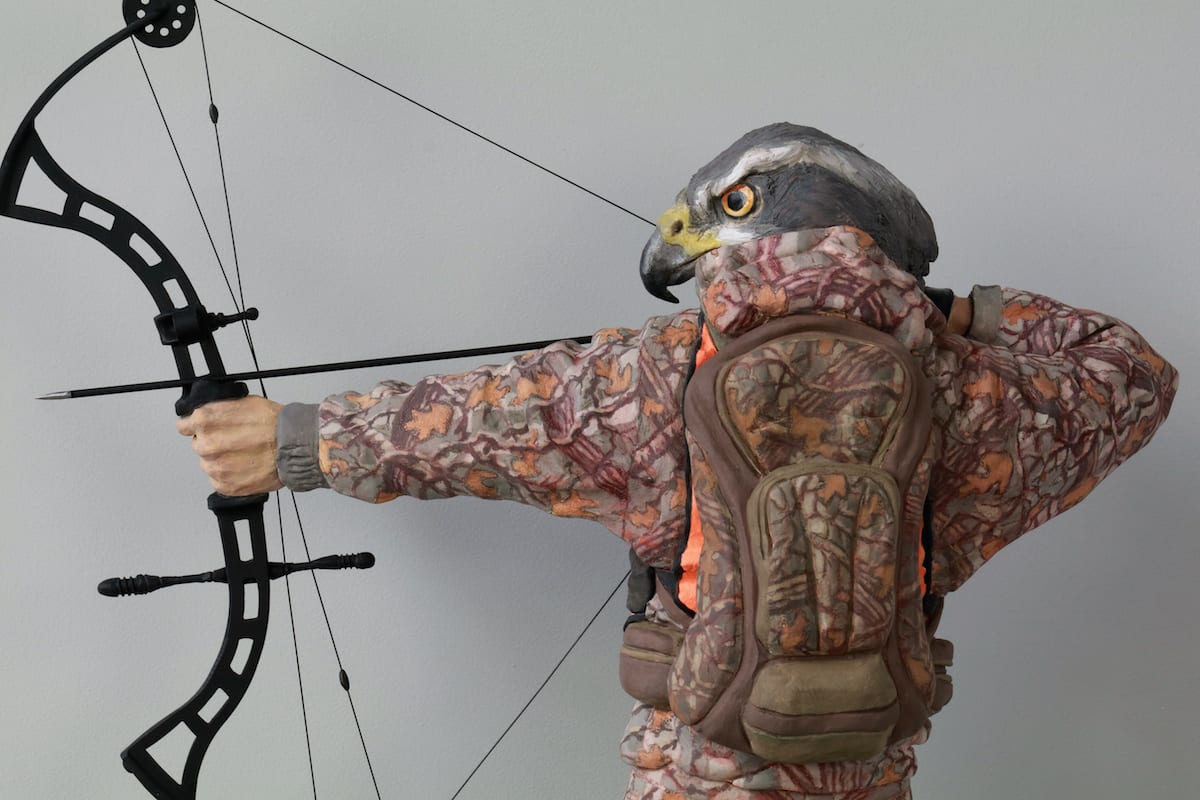
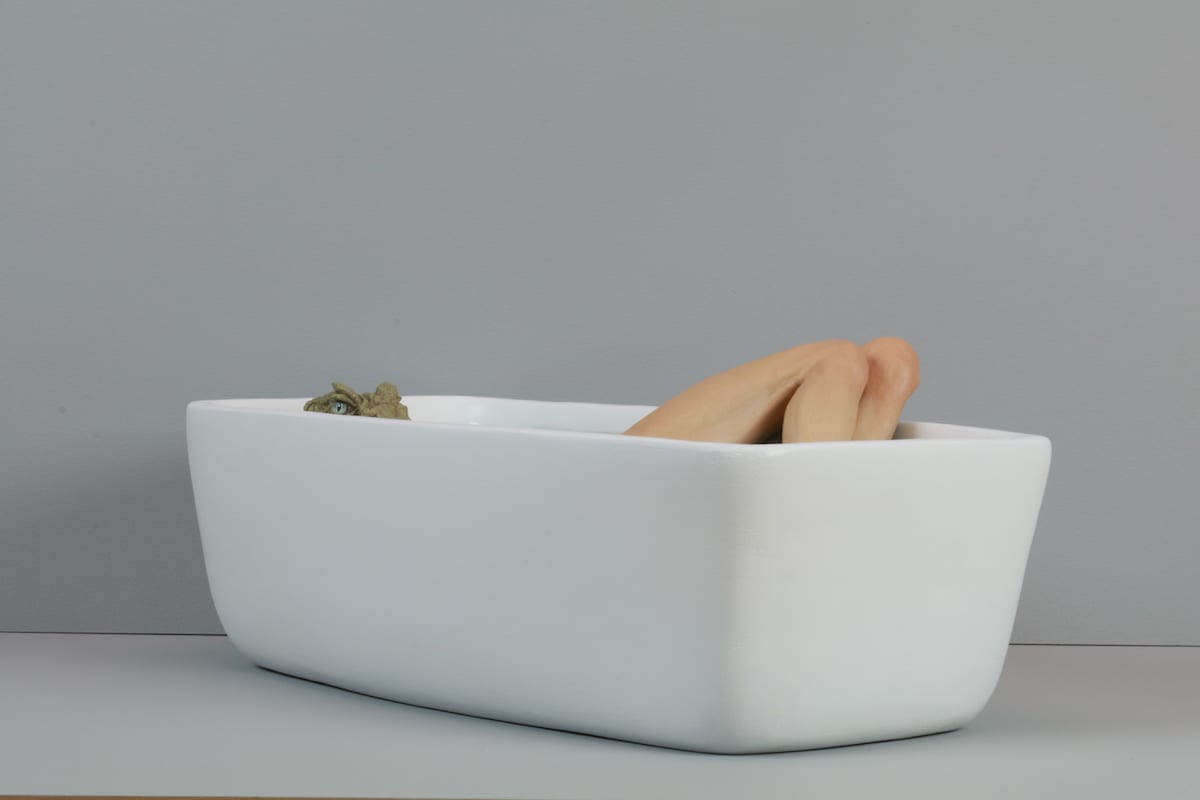

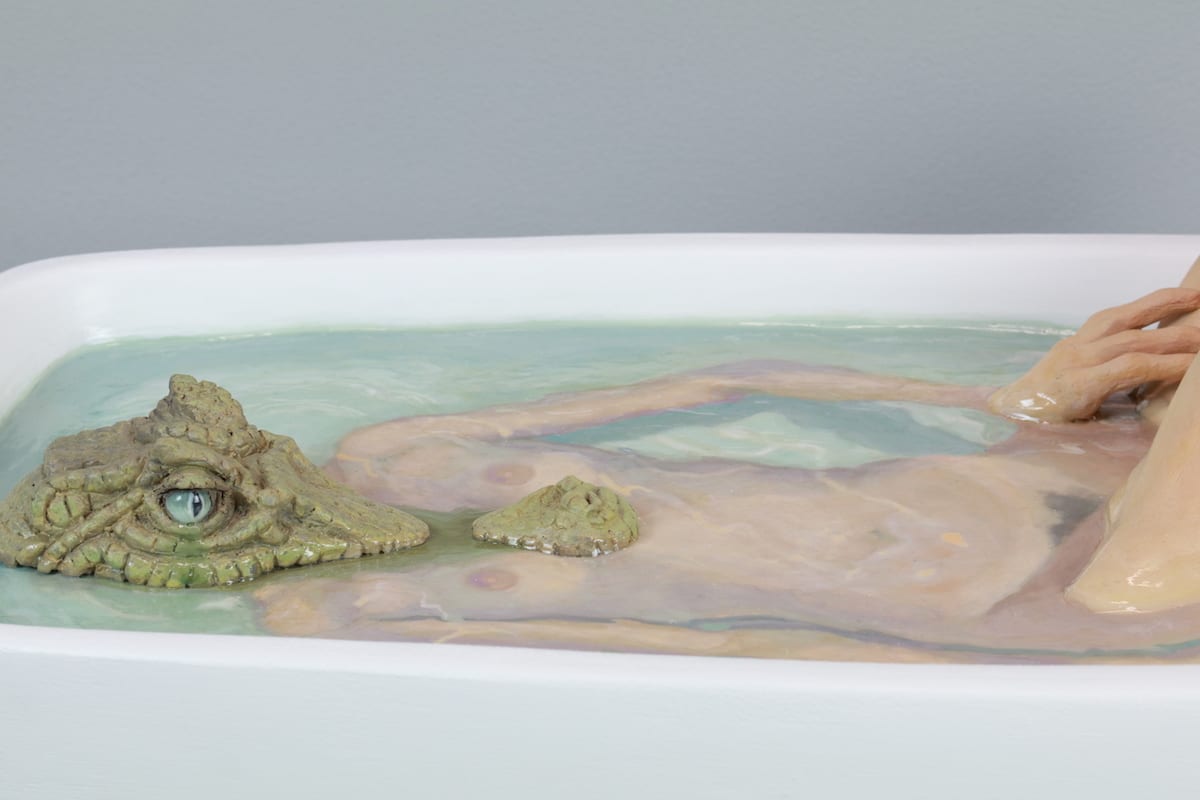
Thematically similar to Crocodile Tears, though in a non-predatory fashion, the daredevil antics of One Trick Pony are meant to draw the attention of others while his precarious stance disallows them from getting truly close. But perhaps Gallo’s most appropriate metaphoric piece for separation is Animal Kingdom, a functional chessboard with bust-like reliefs of beasts for playing pieces. In the course of executing a game, many pawns would be sacrificed and other pieces lost, removed completely from play until a winner declared and the events start afresh. A more subtle approach to this modular nature is Brooks and Oliver, the rainbow finch-headed pair enjoying their happy hour drink. Given their non-fixed positions, this duo can be moved into close proximity with one another or kept at distant odds.

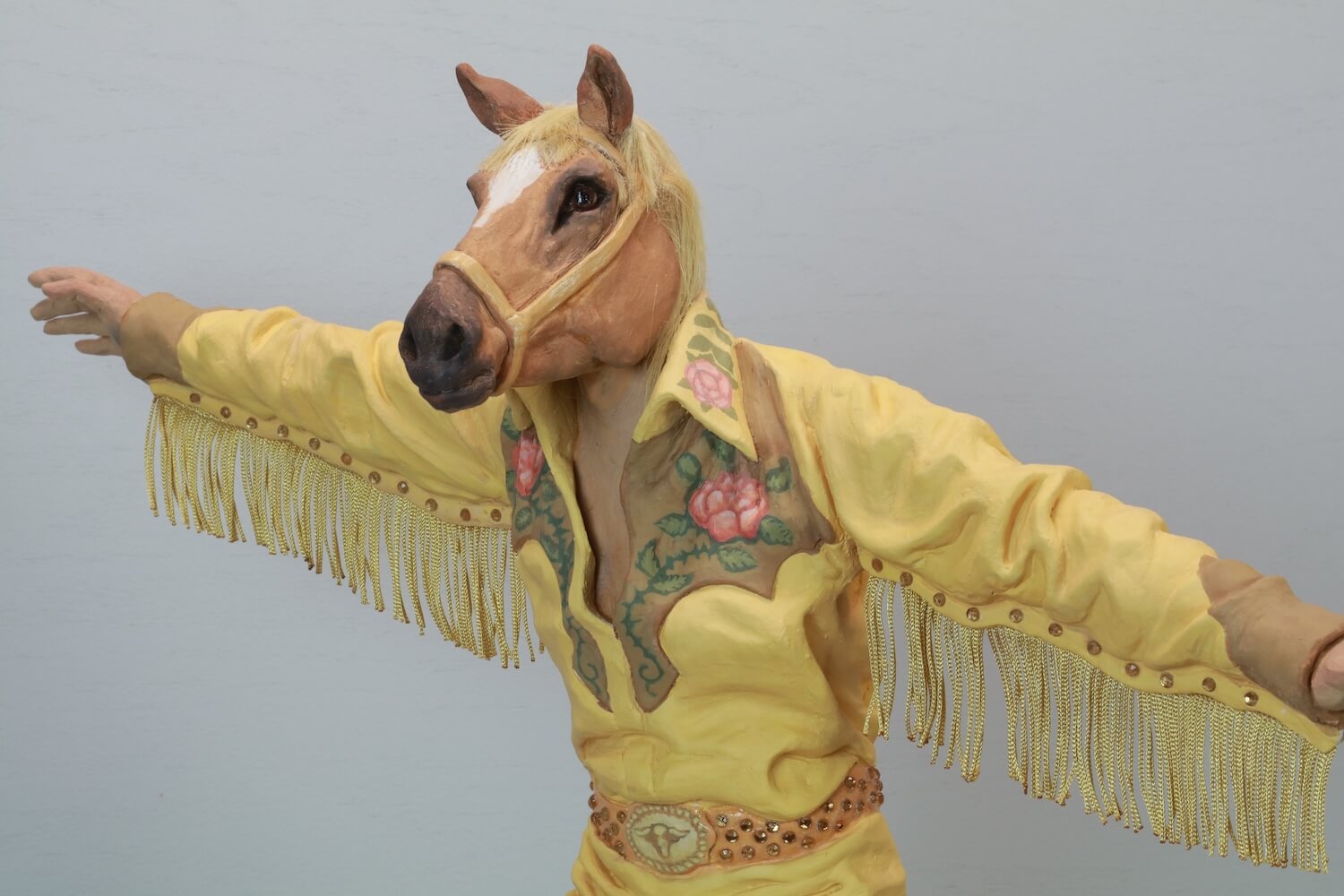
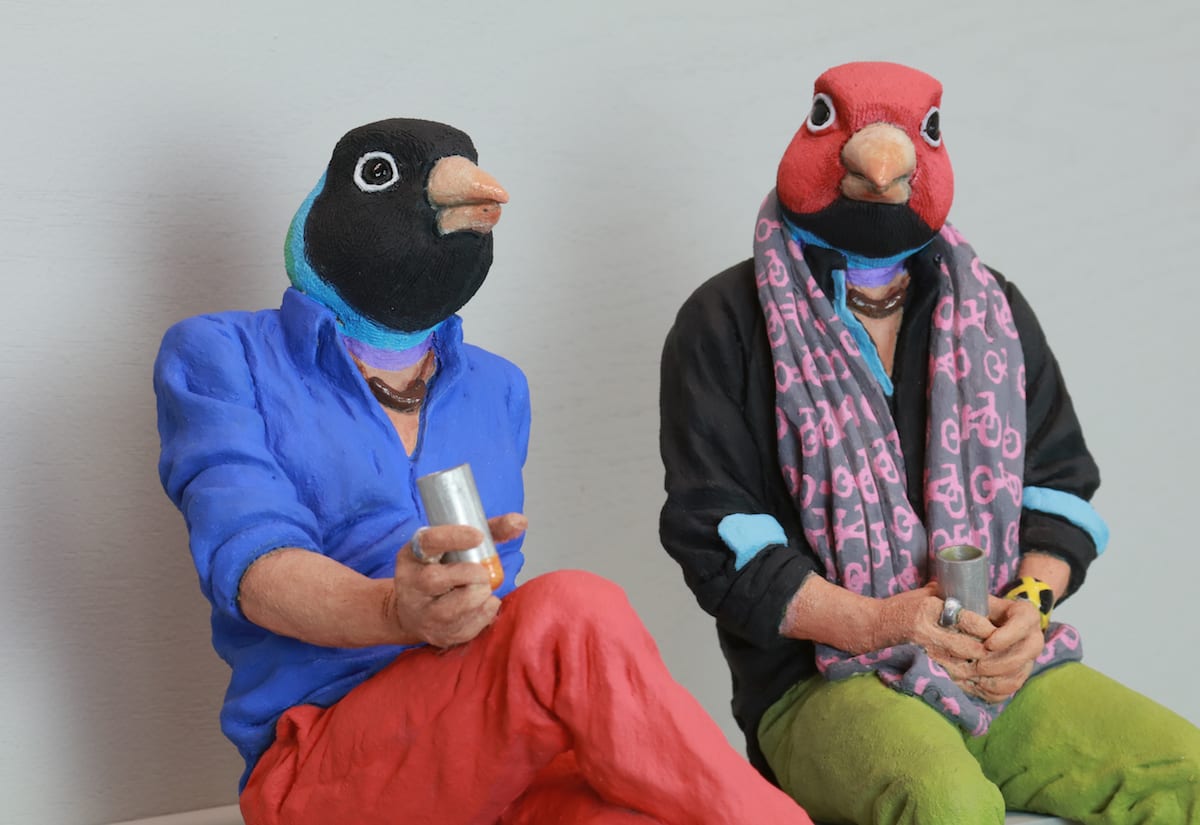
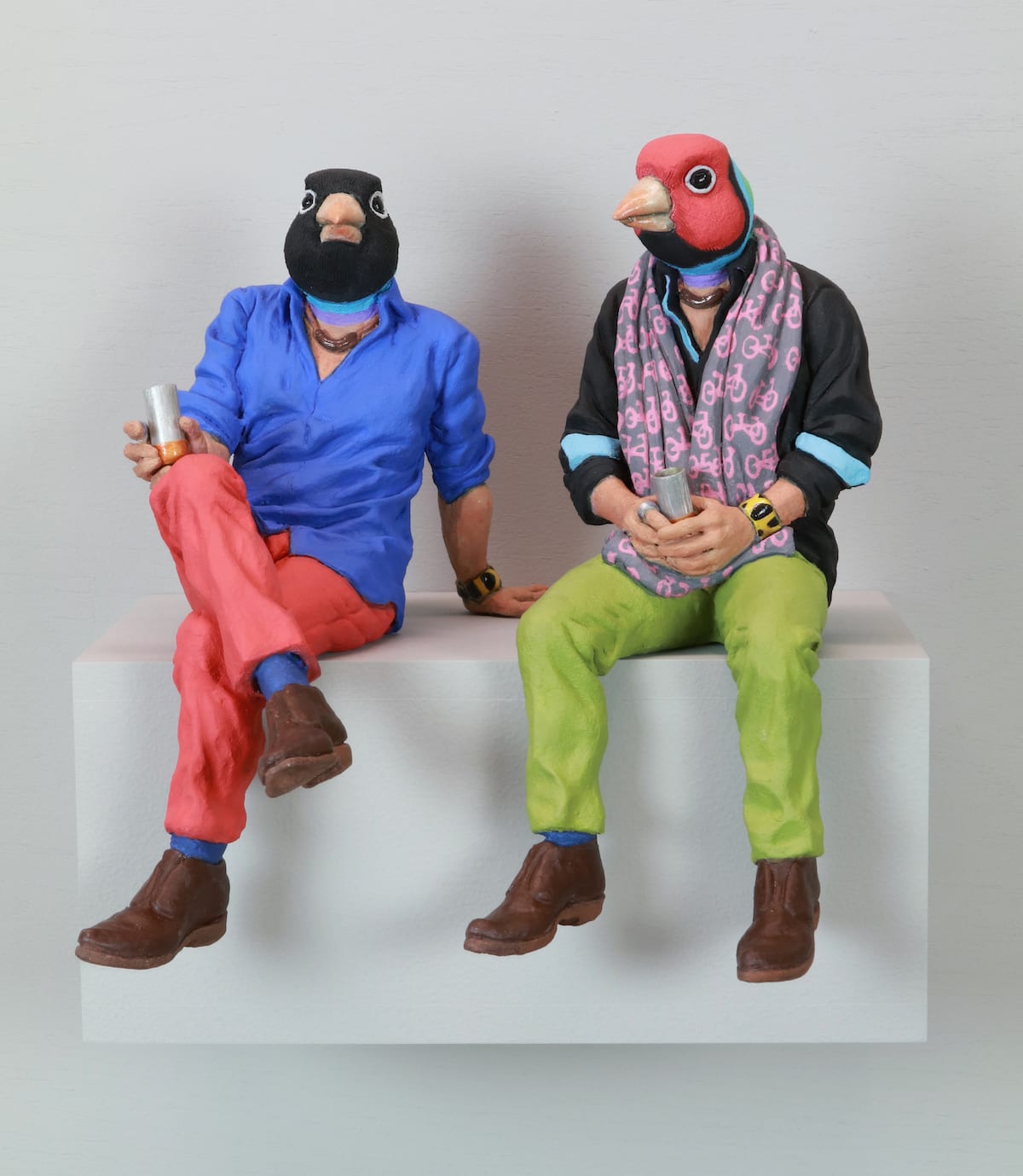
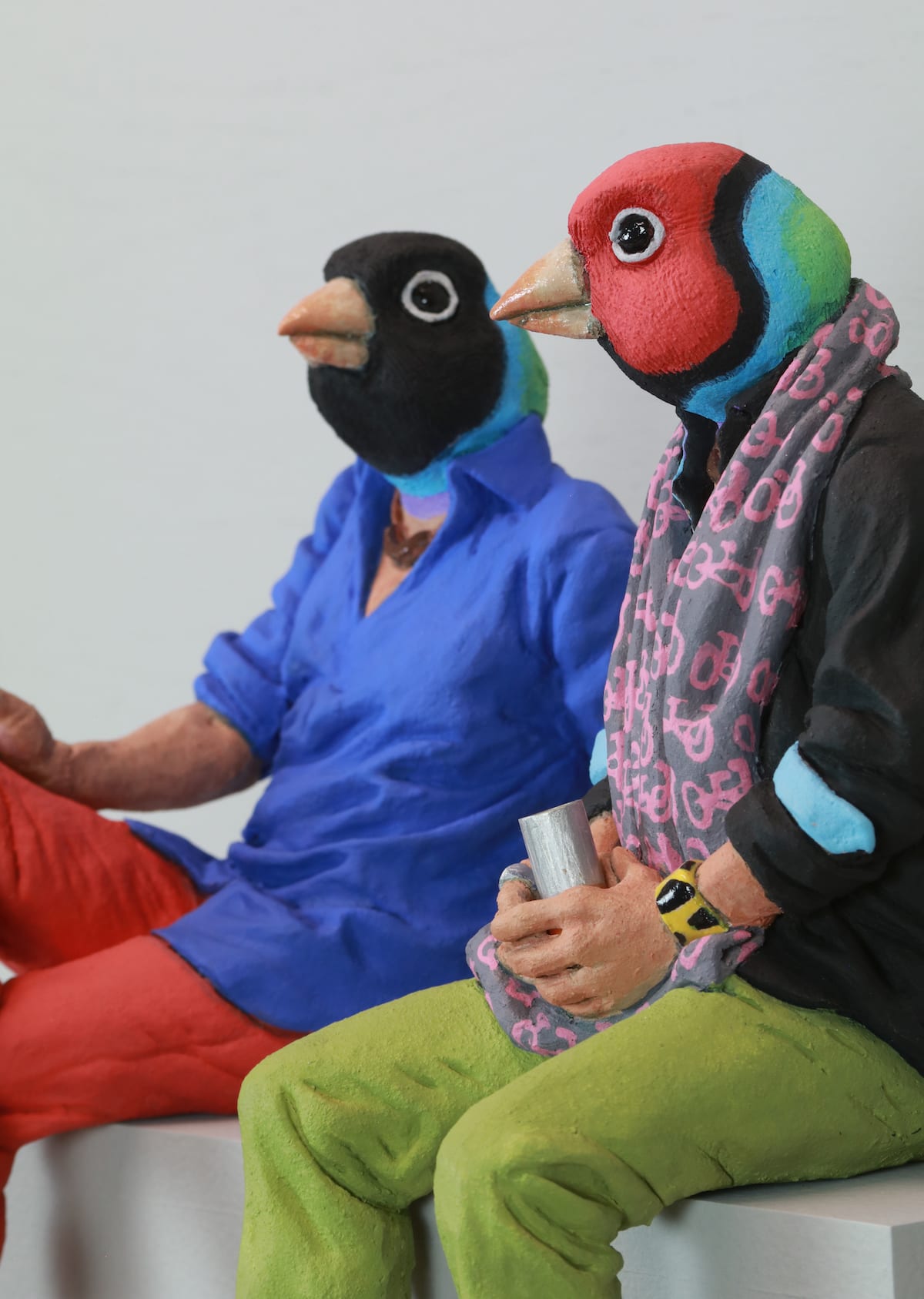
Fixed at opposite sides of their diorama, the wedding cake is twisted from a symbol of togetherness into a visual divide between the couple depicted. Each facing the other way, the rabbit-woman and rooster-man in Tangled Up in Blue are physically less than a foot apart but they feel insurmountably separated. But almost like a final, uplifting nod within Gallo’s Most of the Time exhibition, You’ll Never Walk Alone captures a perfect moment of playful togetherness, a father and son forever frozen in a loving piggyback ride. And if the narrative of this show is that of loss, then this is the denouement, the realization that even lost love can bear amazing fruit.
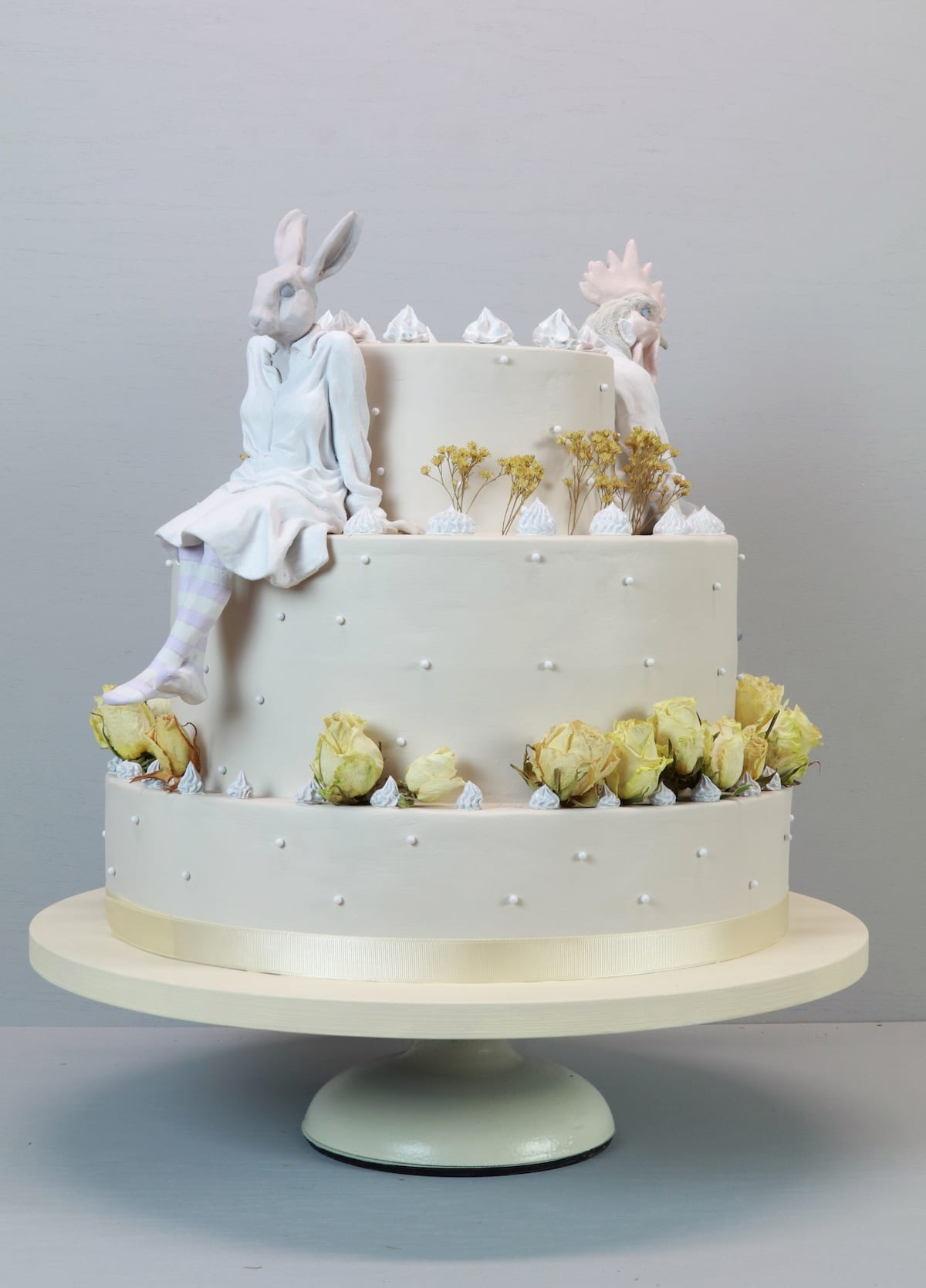
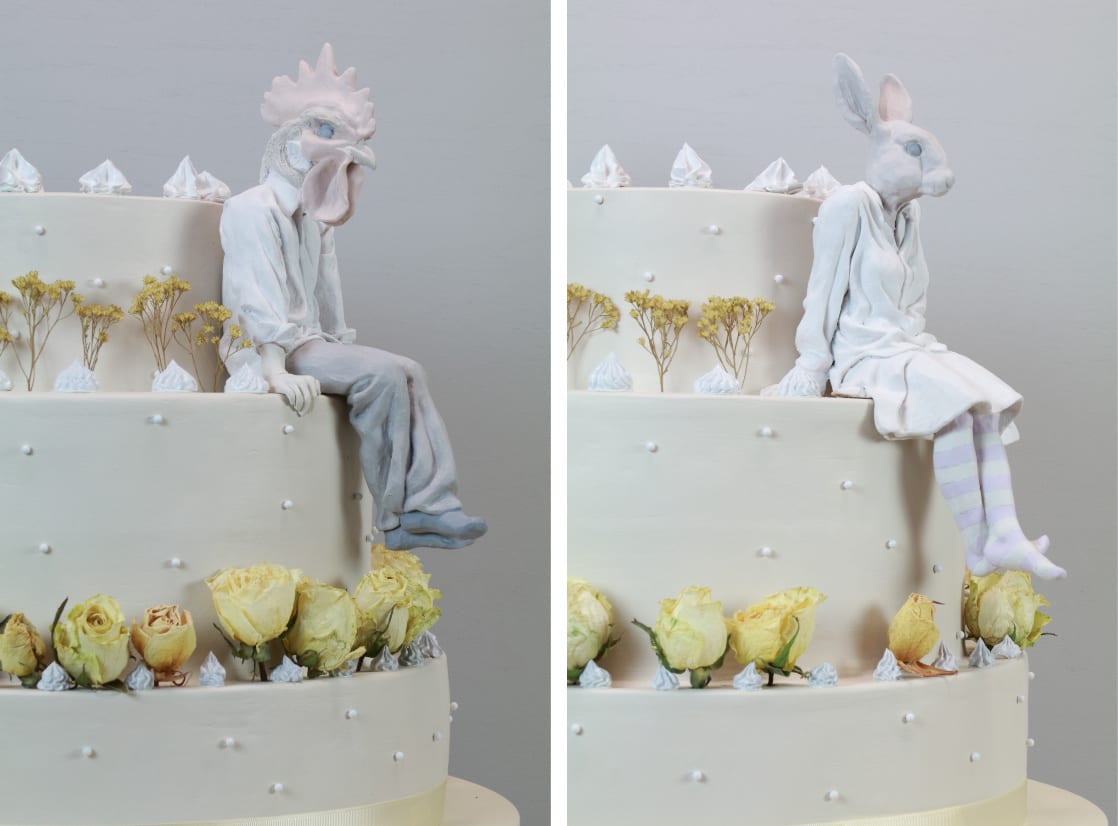

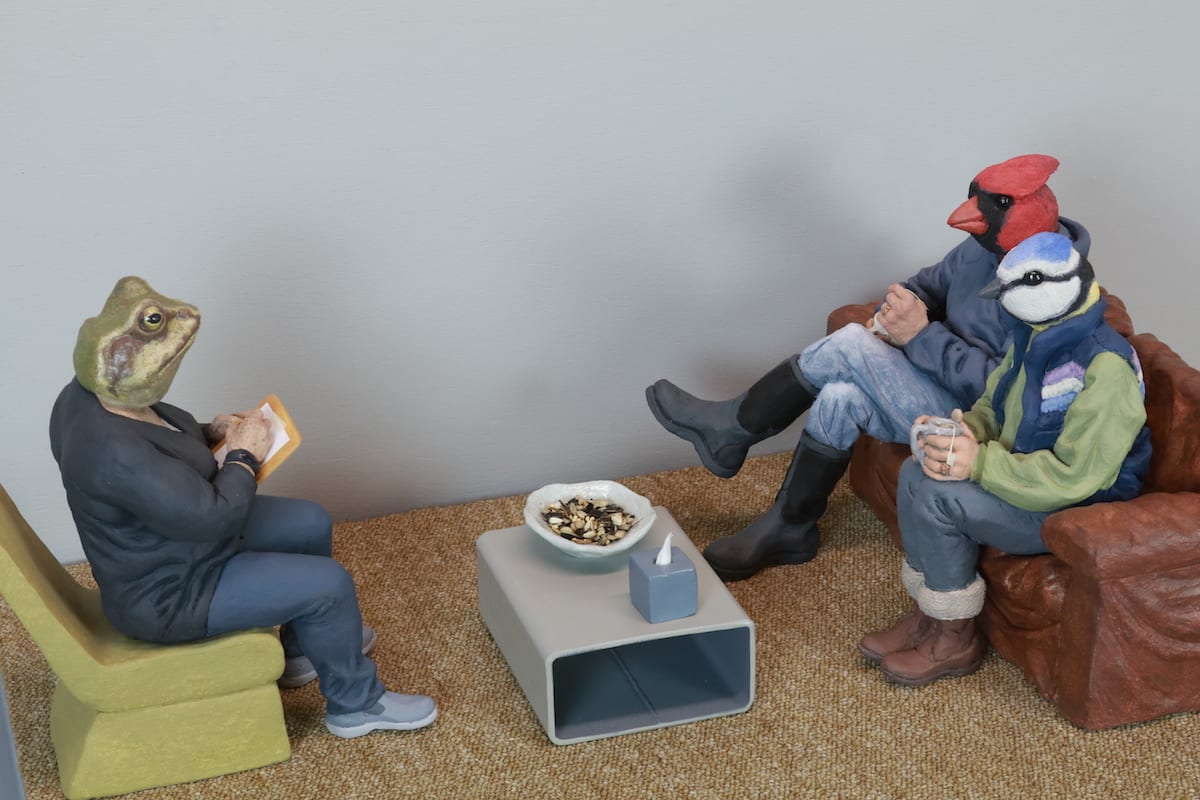
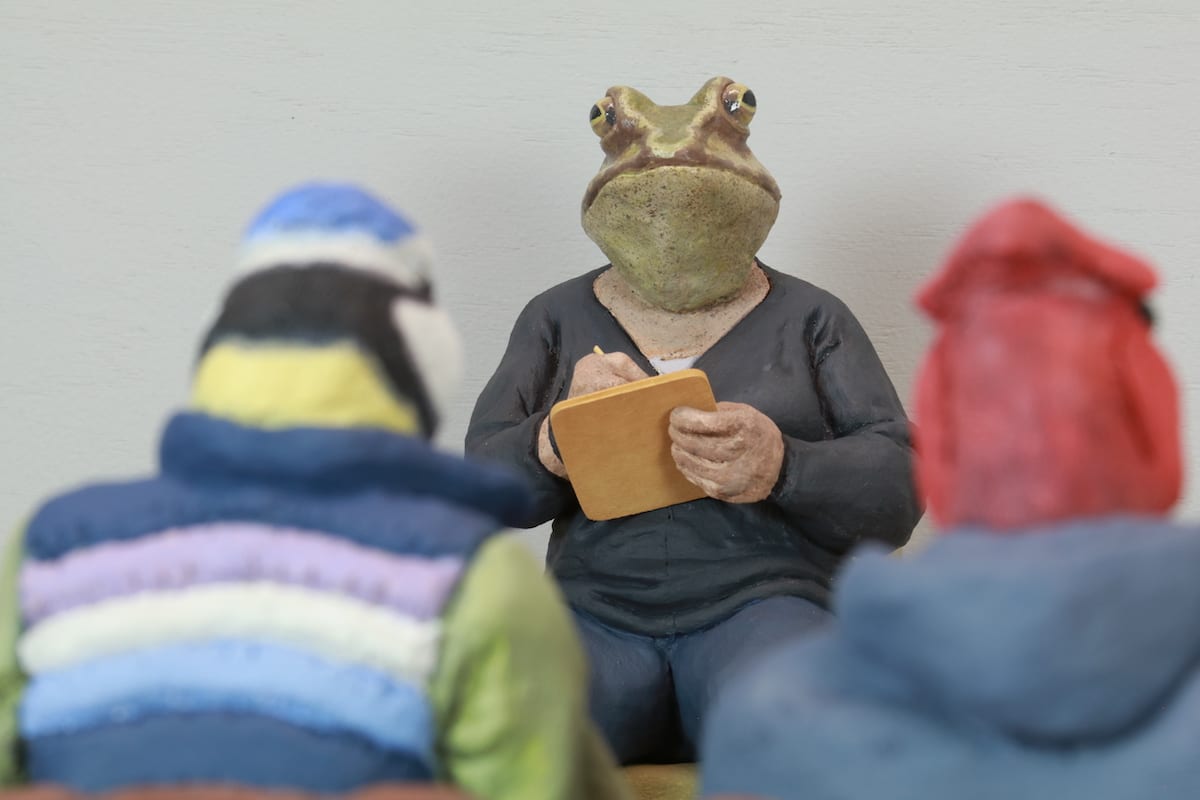
Alessandro Gallo’s Most of the Time solo exhibition at the Abmeyer + Wood had its opening reception on Thursday, April 25th from 5-8pm, with all works in this exhibition remaining on display until May 31st, 2019 at the gallery’s physical location (1210 2nd Avenue, Seattle, WA 98101).
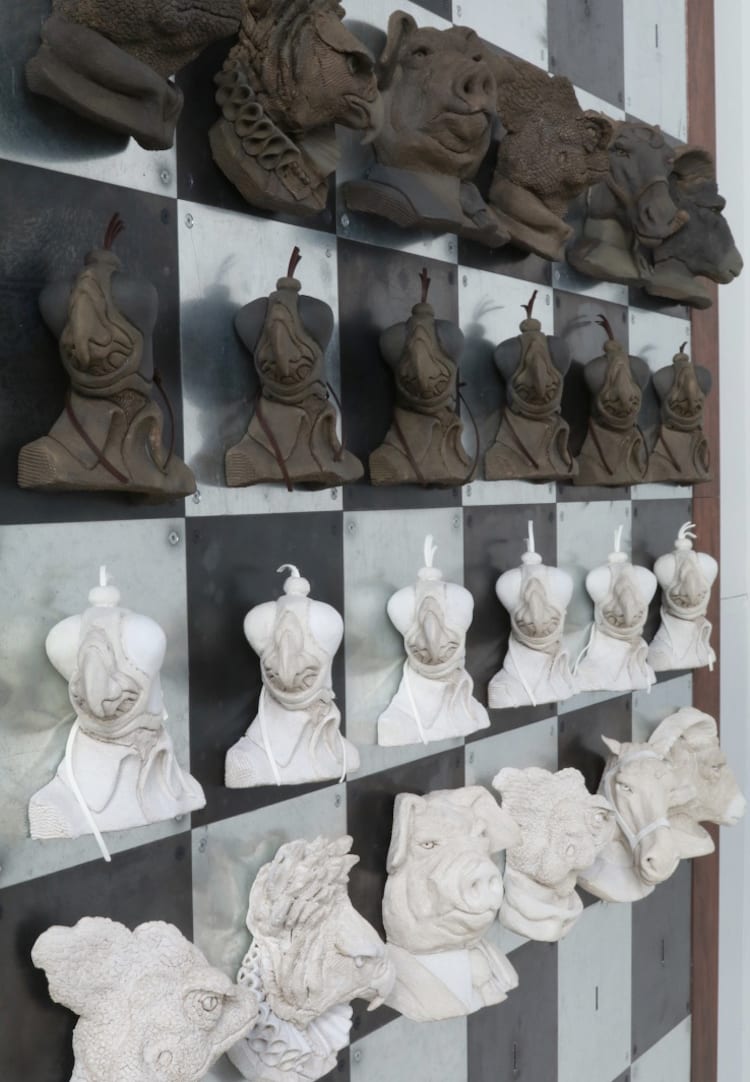
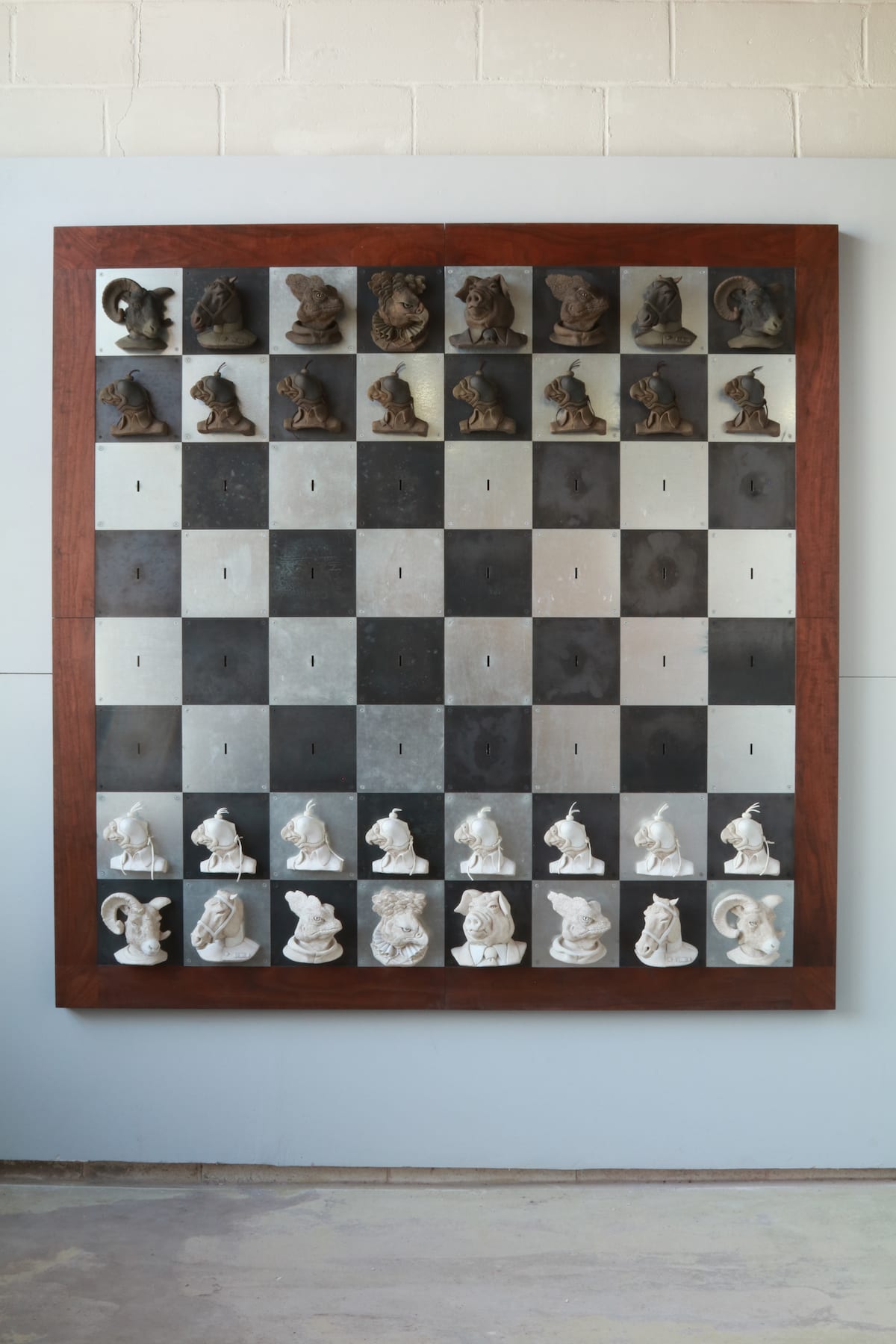
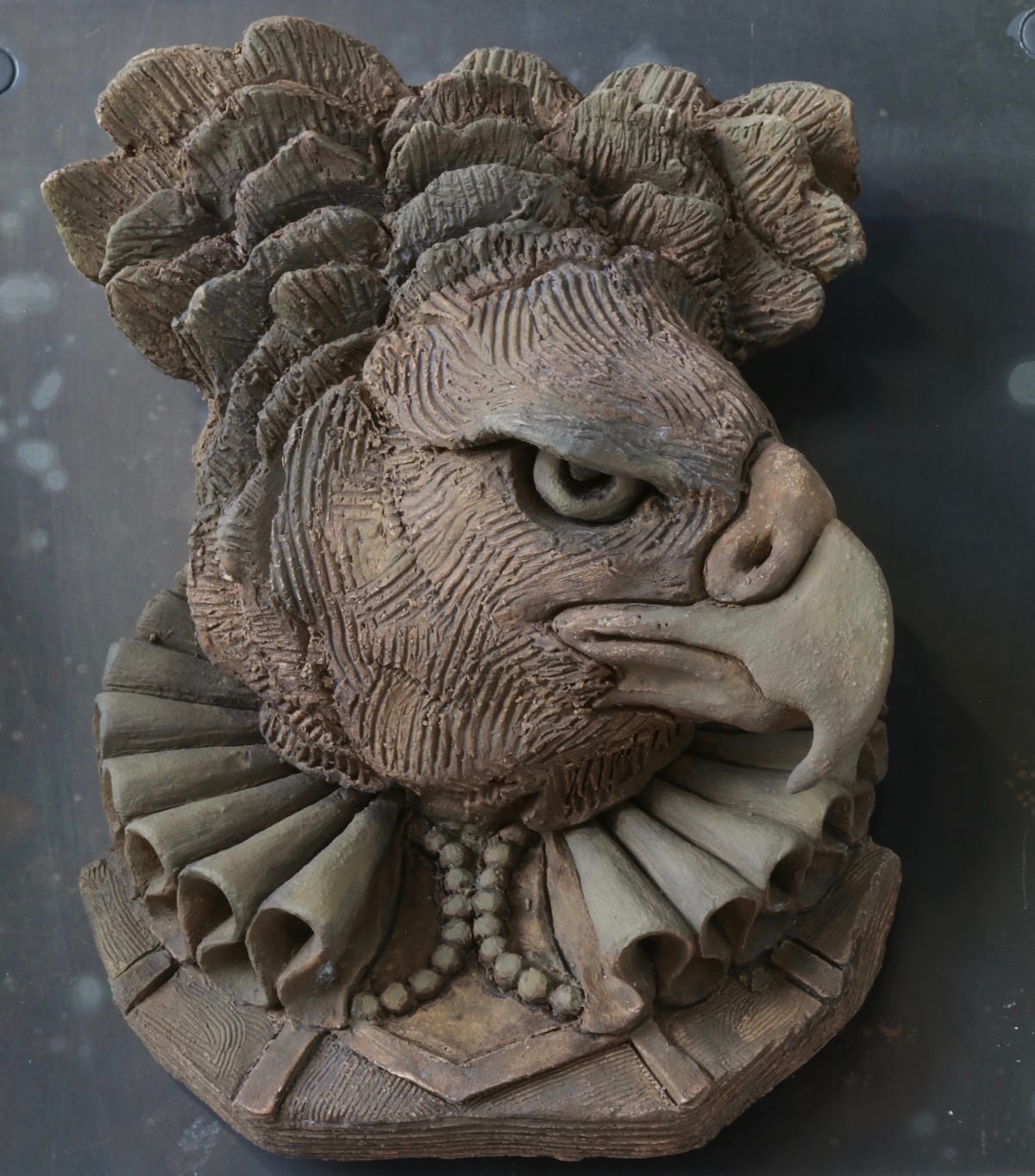
C-File Layout by Whitney Jones.
Love or loathe this exhibition from the world of contemporary ceramic art and contemporary ceramics? Share your thoughts in the comments section below.
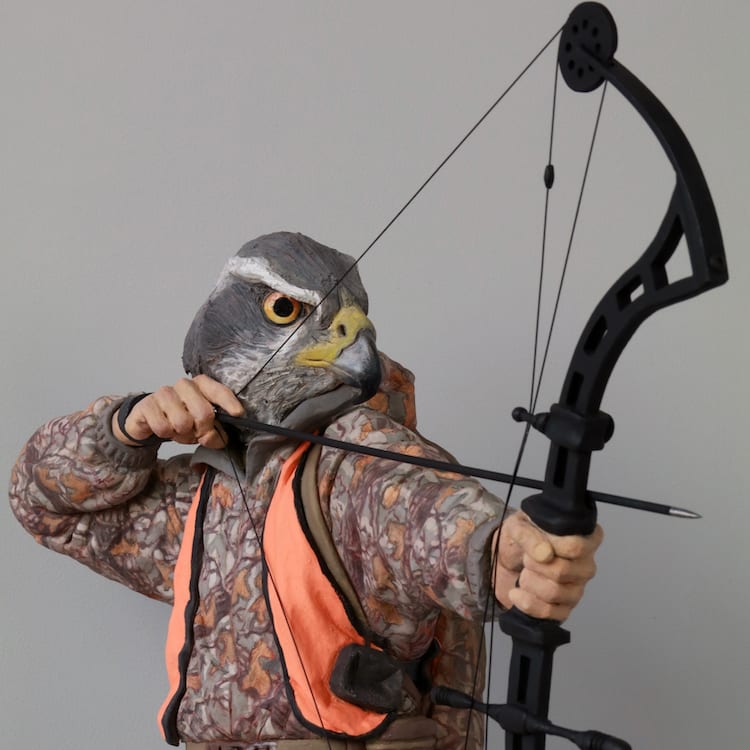
Add your valued opinion to this post.